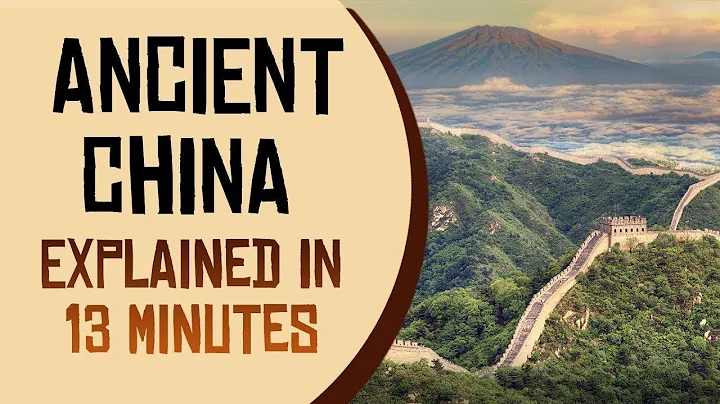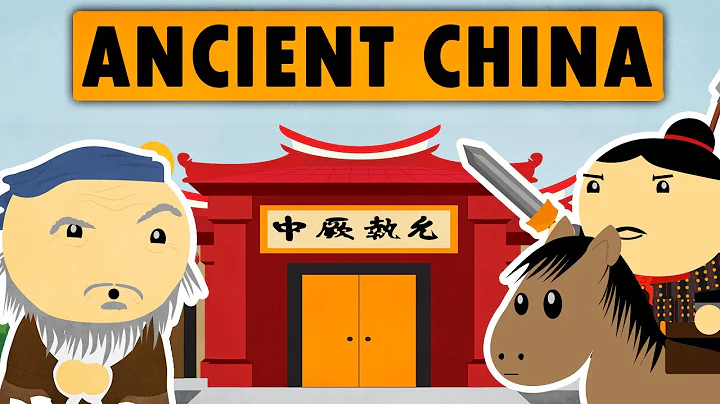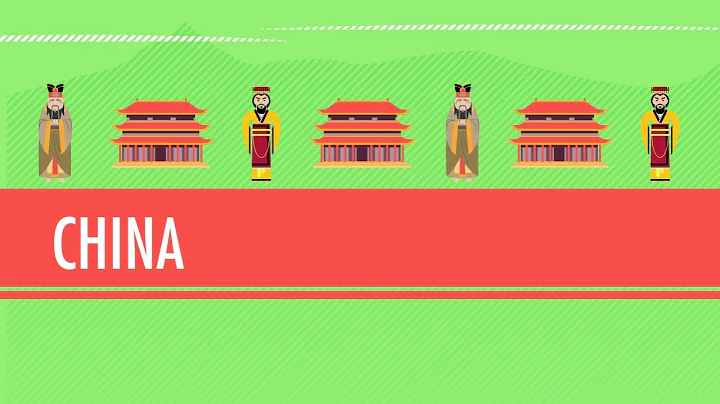is 2800 words, you can watch the video version directly!
Click here → 
Today’s reading
"Lecture Notes on Ancient Chinese Culture" Ge Zhaoguang
❤ Study with Xinxin and systematically learn Chinese culture❤
You must not have imagined that the beautiful and kind Guanyin Bodhisattva in our impression is originally a male. ! There are pictures and the truth! In the Sui Dynasty murals in the Mogao Grottoes in Dunhuang, Guanyin has a mustache, and there are many paintings that can prove this. "The Avatamsaka Sutra" says: "The brave husband observes freedom." It turns out that in India, Guanyin Bodhisattva is the same as Manjusri , Samantabhadra , Ksitigarbha Bodhisattva , and they are all male! He changed into a woman only after he came to China!

Dunhuang Mogao Grottoes Guanyin Statue
What’s even more amazing is that in the original Buddhist legend, Guanyin lived in South India, but in Chinese legends, Guanyin lived in Zhejiang Putuo Mountain ! And later, the Taoist also appeared in Guanyin . Even the image of the Catholic Virgin Mary is very similar to Guanyin!
Actually, if we zoom in a little wider and look at it, you will find that it is not just Guanyin itself that has changed, but Buddhism as a whole!

Did you know that in traditional Buddhism, the value of individuals, families, and countries is not as valuable as that of Buddhism. The status of the Three Jewels of Buddha, Dharma, and Sangha is higher than that of the emperor! This is very different from the status of a monk in China.
Moreover, in the world of Buddhism, India is the birthplace of truth, so naturally India is the center of the world. But after Buddhism was introduced to China , it changed its tune and said that the world has two centers, India and China, or three or even four centers. It turns out that the pluralistic worldview we now advocate has been around since then!

You must know that there is a very important issue in the spread of religion, which is the correctness of beliefs. If you want to spread, you must follow the original purpose. So why did Buddhism undergo great changes after it entered China? After reading Teacher Ge Zhaoguang's "Lecture Notes on Ancient Chinese Culture", I finally got some ideas.
In fact, with the introduction of every foreign culture, there will be some changes, but it is rare to see even the most fundamental changes like this. Alas, you can’t blame it. Who allowed it to encounter China?

The power of sinicization in China is obvious to all, including the sinicization reform of Northern Wei Emperor Xiaowen, as well as the development of in the Yuan Dynasty and in the Qing Dynasty. These are the best proofs in history. The fundamental reason for having such a powerful force lies in the solid foundation of Chinese civilization.
For example, the ancient Chinese people always believed that they were the center of the world and that Han civilization was the pinnacle of world civilization. This view of the world is deeply rooted in the hearts of the people.
Another example is that under feudal autocratic rule, imperial power was absolutely sacred and inviolable. There are also Confucian ethics and morals , filial piety, loyalty, trust, propriety, justice and shame. These are the most basic things that supported ancient China.

But traditional Buddhism says that everything is illusion, and human existence in this world is worthless. The nurturing grace of parents, the blood ties of family, and the governance of the monarch are not reasonable, and even the order of society is not reasonable. significance.
Don’t you think this is shaking the foundation of China? Moreover, Buddhism has allowed a large number of people to become monks, and almost no one is farming or paying taxes. It has even formed a large social group that is organized and disciplined but uncontrolled, which threatens the imperial power. What do you think? Can the emperor still endure it?
Therefore, if Buddhism wants to enter China, it must change itself. From the most basic world view and Buddhist teachings to its image representation and practice methods, it can be said that Buddhism has reshaped itself in all aspects and gained a new life, and the iconic result of this new life is Zen.

Compared with Zen Buddhism, traditional Buddhism is very cumbersome and heavy.They believe that the world is divided into two, one is the vulgar and turbid secular world, and the other is the pure and free spiritual world. If you want to have peace of mind, you must separate yourself from the secular world, self-restraint, self-punishment, and practice every day. Wiping the mirror of the soul, only through step-by-step hard practice can we escape the sea of suffering and reach the other shore. Just like Shenxiu, the representative of early Zen Buddhism, said: "Always wipe it diligently to avoid dust."

But his junior brother Huineng was right: "There is nothing in the first place, so where can there be dust?" Huineng felt, Everything in the world is illusory, even the dust is illusory. The human soul itself is clean, so what else is there to wipe? Isn't this unnecessary? As soon as you realize it, you will understand everything. Everything is fake, even the practice is fake! What other shore should we go to? This shore is the other shore! Everyone has Buddha nature, and there is no need for a Buddha, no precepts, and no organization. With just a change of mind, everyone can become a Buddha!
From then on, Buddhism no longer seemed like a religion, but more like a spiritual belief. Chinese Buddhism thus broke away from the body of Indian Buddhism and transformed into a brand new life.

In China, such a change is not a coincidence, but is influenced by traditional Chinese thought, especially Taoist doctrine. When I read the last book, I felt that Buddhism and Taoism were very similar. Teacher Ge Zhaoguang made this point clear in this book.
is like a question and answer in a Zen quotation: "What was your true identity before your parents gave birth to you?" The answer is: "None". This "nothing" is not nothing, but contains countless possibilities. Before you were born, you might be a boy or a girl, you might be named Zhang San, you might be called Li Si, you might be lively and laughing, you might be irritable and crying, anything is possible. But once you are born and become "you", you are limited by various language attributes, and you can only be you. In Taoism, this is called "all things in the world are born from existence, and existence is born from nothingness."

It can be seen that neither Zen nor Laozi like the limitations of language. They both feel that language is an obstacle and even misunderstandings, so Zen Buddhism says, "Contemplate with your own wisdom, without false words." Laozi said, "The Tao can be Tao, but it is not Tao." Both schools require us to go beyond language, return to the original starting point of all things, and understand everything with our hearts.
And this starting point is the "nothing" just mentioned. It is called "emptiness" in Buddhism and "Tao" in Taoism. If you want to return to this state, you must get rid of the shackles of all things and let go of the thoughts in your heart. In Zen Buddhism, it is called "no thoughts, no form, no attachment". Zhuangzi also said "no intention, no waiting", "no self, no merit, no fame" ".

How to do it specifically? The Buddhist method is "meditation" and Zhuangzi's method is "sitting and forgetting". Both of them are called meditation in the common saying. They both let go of external obsessions and only seek concentration. Through "meditation", Zen practitioners can achieve the freedom and transcendence after "sudden enlightenment". Zhuangzi also said that he should achieve "free travel". Both are pursuing a kind of spiritual freedom.
You see, the theories are similar, the methods are similar, and even the final destination is similar. With so much in common, it’s hard to call it a coincidence. There is a sentence in the book that sums it up well: Although Zen Buddhism is cloaked in the guise of Buddhism, it actually grows from the roots of Laozhuang. It was from this that Chinese Buddhism opened a new chapter.

After understanding the transformation of Buddhism, it will be very clear if we look back at the changes in Guanyin. The residence changed from South India to Putuo Mountain , which is in line with the Chinese people's ideas. The change from male to female is actually understandable. After all, the traditional aesthetic ideal of the Chinese people is still soft and quiet. So why did Guanyin go to Taoism and Catholicism again?
is actually the same thing. In China, the emperor is the first, and all religions are under the shroud of imperial power. They do not have their own clear scope of rights, and the boundaries between them are not clear. Even if they merge, there will be no conflict.Moreover, the beliefs of ordinary people are not pure beliefs without utilitarianism. They are generally to ensure peace, seek heirs, seek wealth, seek marriage, etc. No matter what religion he is, black cats and white cats are the ones who can catch mice. Good cat. Therefore, it is not surprising that Guanyin , Mazu, , and Guanyin, which gives birth to children.

As for the Guanyin in Catholicism, that is because in the late Ming Dynasty, there was a trend of resisting foreign religions. Catholic missionaries used the original local resources to use Guanyin instead of the Virgin Mary to preach. Anyway, the people did not Will figure it out.
Apart from Catholicism, Buddhism and Taoism are already confused enough. Do you still remember the Bodhi Patriarch in "Journey to the West"? Although the name "Bodhi" comes from Buddhism, in fact, he is a Taoist priest who teaches magic! When people hold funerals, they invite monks and Taoist priests, which may not be enough, but also invite lamas.

Not only the common people are like this, but also the upper classes are mixed with beliefs. Just like Li Bai , many people say that he believes in Taoism, but he is equally respectful to monks, and sometimes talks about Confucianism; Su Dongpo is even more obvious, he believes in Confucianism, Buddhism and Taoism; Xuanzong of the Tang Dynasty Annotations were also made on the three classics: The Book of Filial Piety, the Diamond Sutra, and the Tao Te Ching; Emperor Yongzheng also said that "Buddhism governs the mind, Taoism governs the body, and Confucianism governs the world." It is this integrated and open belief concept that finally led China to the miraculous situation of " three religions in one ".
Some people always say that Buddhism is a world religion, it was it that won the Chinese market, and it was Buddhism that conquered China. But if we look at it in essence, isn’t this the conquest of Buddhism by China?

I am Mu Zixin, a student of Chinese style. Remember to pay attention and read together for the rise of China!






















